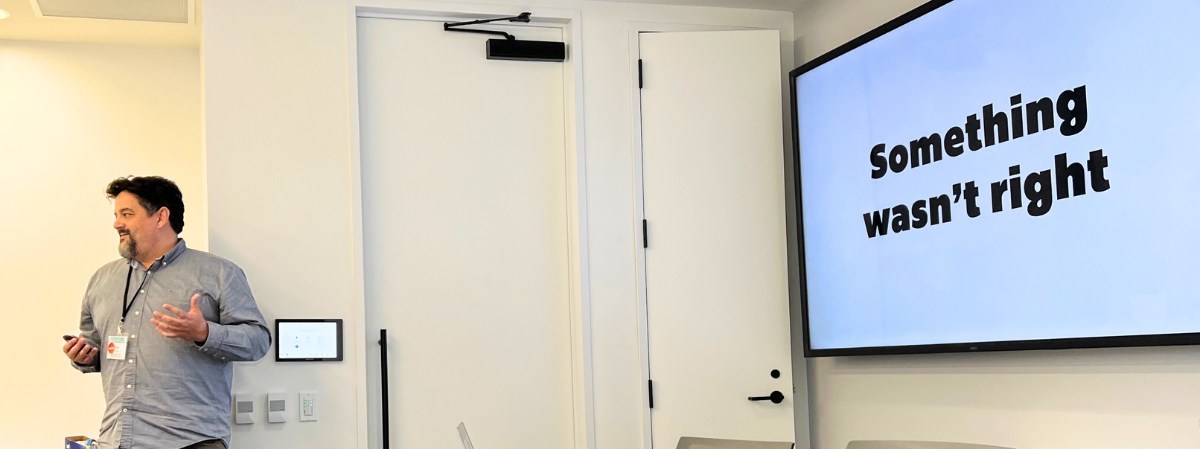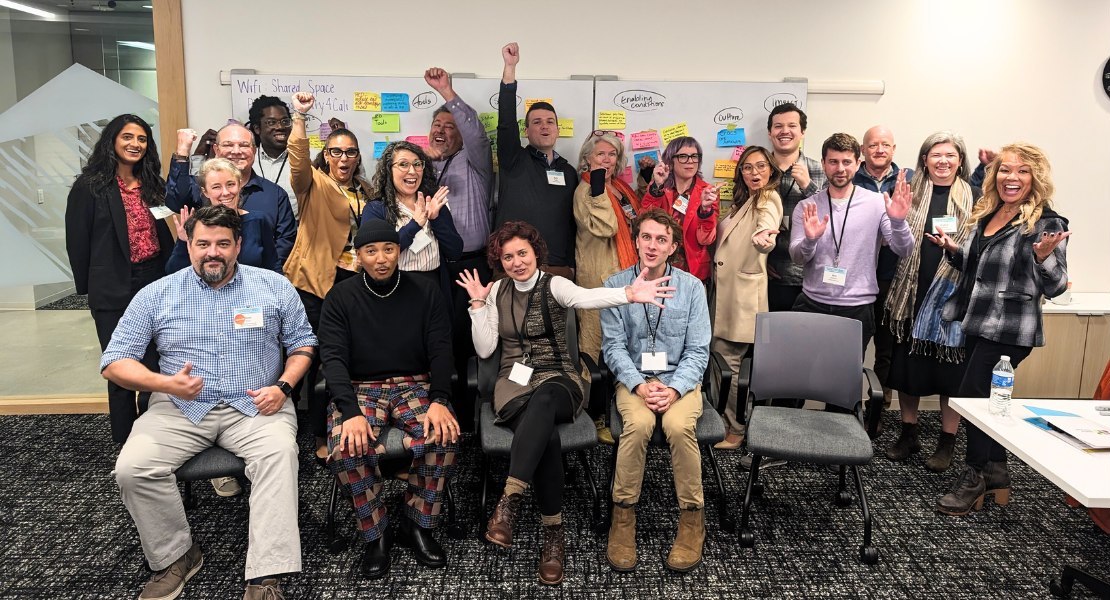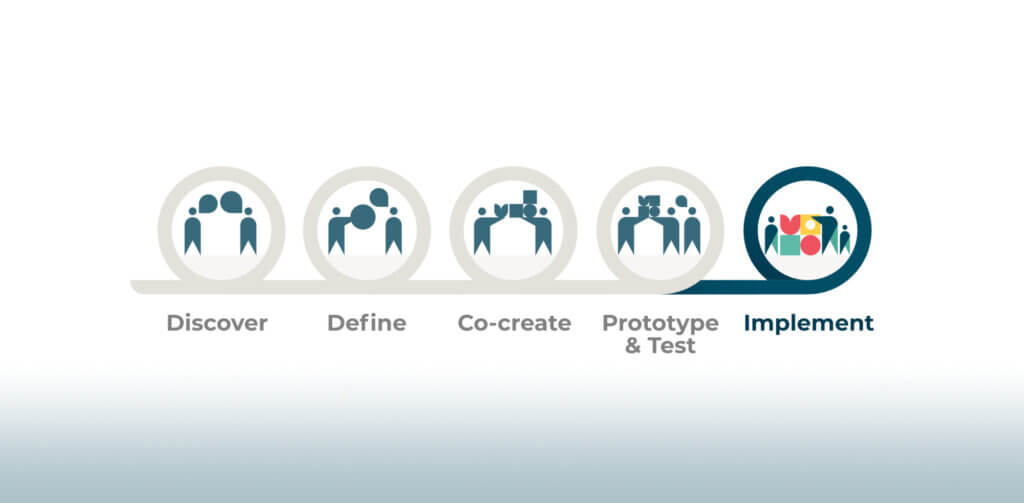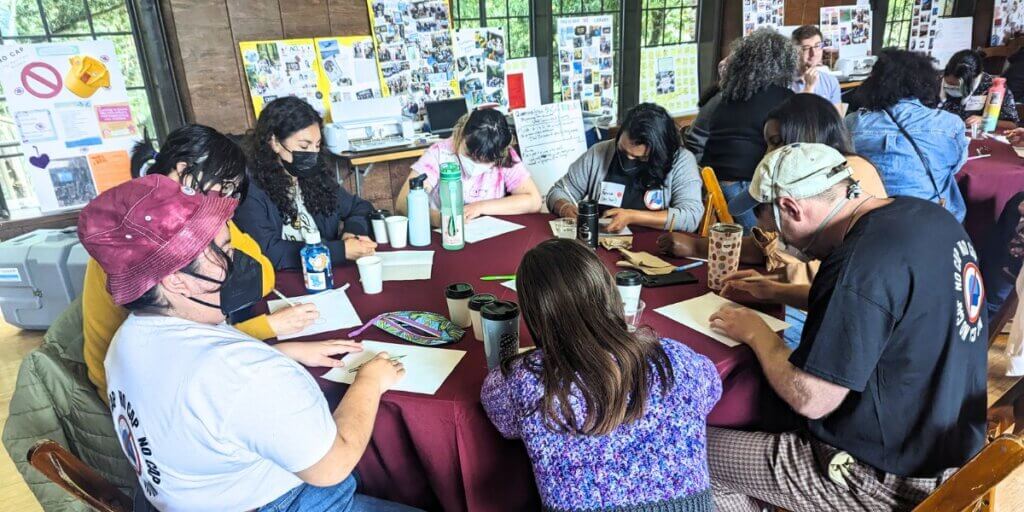Innovation Showcase: Co-Designing a Future Where People Come First
2023-2024 Workforce Transformation Corps

At the end of January, we had the honor of designing and facilitating a participatory event with our partners at Make Fast Studio and JFF to ‘showcase’ the great work of the Workforce Transformation Corps. It had been a year since the kick-off, where five Fellows signed up to apply their varied skills and experiences to the audacious goal of transforming workforce development in California…in one year, at five different organizations, and with the support of human-centered design, DEIA and storytelling experts.
Fellows were placed in workforce development organizations in the City of Anaheim, Ventura County, Santa Barbara County, Tulare County and the City of Los Angeles and spent their year immersed in the individual, organizational and systemic workings of workforce development while learning and applying human-centered design. The Innovation Showcase functioned as the culmination of this work, and an opportunity to further the learnings of this experience with stakeholders from across the system.
The Importance of Storytelling
This was a year of immersive learning experiences spanning an extensive catalog of human-centered design methods: stakeholder identification; empathy interviewing; ecosystem mapping; persona development; qualitative data analysis; and prototyping. Along with these methods, DEIA was specifically incorporated with experts at Unbrand Consulting and Virginia Hamilton from Make Fast Studios brought in her friend Barbara Tint, a facilitator, coach and trainer specializing in narrative development to help the Fellows share their stories.
Fast forward to the Innovation Showcase: there was not a dry eye in the room as Fellows shared how the Workforce Transformation Corps transformed not only the organizations they were placed within, but themselves, their families and careers. Storytelling and, specifically, the very human and vulnerable components of learning in a new environment, has a truly transformative property. It became even more clear that our ongoing challenge in workforce development is highlighting the human elements, finding the stories behind job training and placement numbers, to get at the core of what it means to deliver services that actually improve lives.

A Participatory Event
Day 1: Friends & Family
As the Innovation Showcase was meant to share stories and also process what happened in one year of the Workforce Transformation Corps, we spread the event over two days. The first day included all project partners (CivicMakers, Make Fast Studios, JFF, California Workforce Association, Turning Basin Labs) as well as the Fellows and their ‘Friends’ (folks who worked alongside them at their respective workforce development organizations) and was hosted at the LA offices of the funder: The James Irvine Foundation.
This half-day precursor to the more public Showcase the following day provided space for the people who were closest to the work to celebrate, ideate (of course!) and reflect. This included asking all key stakeholders in the room what needs to be put in place to successfully transform workforce throughout the state, as well as a deeper dive into the next iteration of the Maturity Model, which was the impetus for the Workforce Transformation Corps.

Day 2: Innovation Showcase
The objective of Day 2 was for people of ‘influence’ to understand what we learned from the Workforce Transformation Corps, including what worked and what didn’t, as well as develop specific system-level recommendations that were revealed by the work of the Fellows. The influencers in the room included representatives from the U.S. Department of Labor, funders and directors of workforce development boards. Having a whole system in a room allows us to imagine new futures with the very real constraints and opportunities known from the living expertise in attendance.
A key component of Day 2 was listening to the stories of the Fellows and, as workforce innovation is not a spectator sport, the audience was invited to participate in synthesizing their own learnings into potential action, capturing what they liked, wished and wondered from each story they heard.
The event moved from individual and organizational stories to the identification of system levers. We worked together to more clearly define the challenges to then ideating together afterward. The main design challenge: How might we spread human-centered design across California’s workforce system?
Recommendations ran the gamut from leveraging existing organizational efforts for the infusion of human-centered design, such as annual and strategic planning, to embedding HCD principles into RFPs, policies and other procurement vehicles. The incorporation of HCD trainings at multiple levels of the system got a significant “plus one” from everyone in attendance. TLDR; there’s a lot of work to be done.

Let’s Hear from the Experts
Another thoughtful design element as part of the Innovation Showcase event was to invite a representative from the U.S. Department of Labor, Dr. Tamika Ledbetter, Regional Administrator, Region 6 (San Francisco) from the Employment and Training Administration. Dr. Ledbetter was invited to share her own story after hearing from the Fellows, which gave space for her truly human experience to emerge after we had created a space where honesty and hope were palpable.
She shared her own personal story; growing up in the inner-city to a single mom, not really knowing what opportunities were available to her, and ending up in the workforce system as a case manager. Then, she eventually managed a job center within state government, where she admitted wanting to support human-centered design without having had the language back in 2006 to do so.
Dr. Ledbetter committed to opening up doors in her new role, and creating pathways for this type of work to grow. We learned that Dr. Ledbetter was also a person who had to navigate these systems, which is the exact type of person the Workforce Transformation Corps aims to uplift. It will take multiple dimensions of strategy and engagement to do so, and we’re just getting started.
What Comes Next?
As human-centered design practitioners, we are still in the process of collecting and making sense of the data: a year’s worth of lessons learned in what it might take to holistically impact a system by putting the people within that system first. For now, we are saying goodbye to this particular experience, and making space to usher in what’s next. In the meantime, we know that the experience, skills, mindsets and passion for HCD live on in each of the five Fellows, as well as the organizations and people they interacted with during a very intentional year of learning, listening and growing.
Stay tuned as the CivicMakers team works with the Fellows to more thoroughly document and share learnings, as well as create tools and templates for anyone within the workforce development system in California to leverage human-centered design, in an effort to infuse hope and dignity into services.




